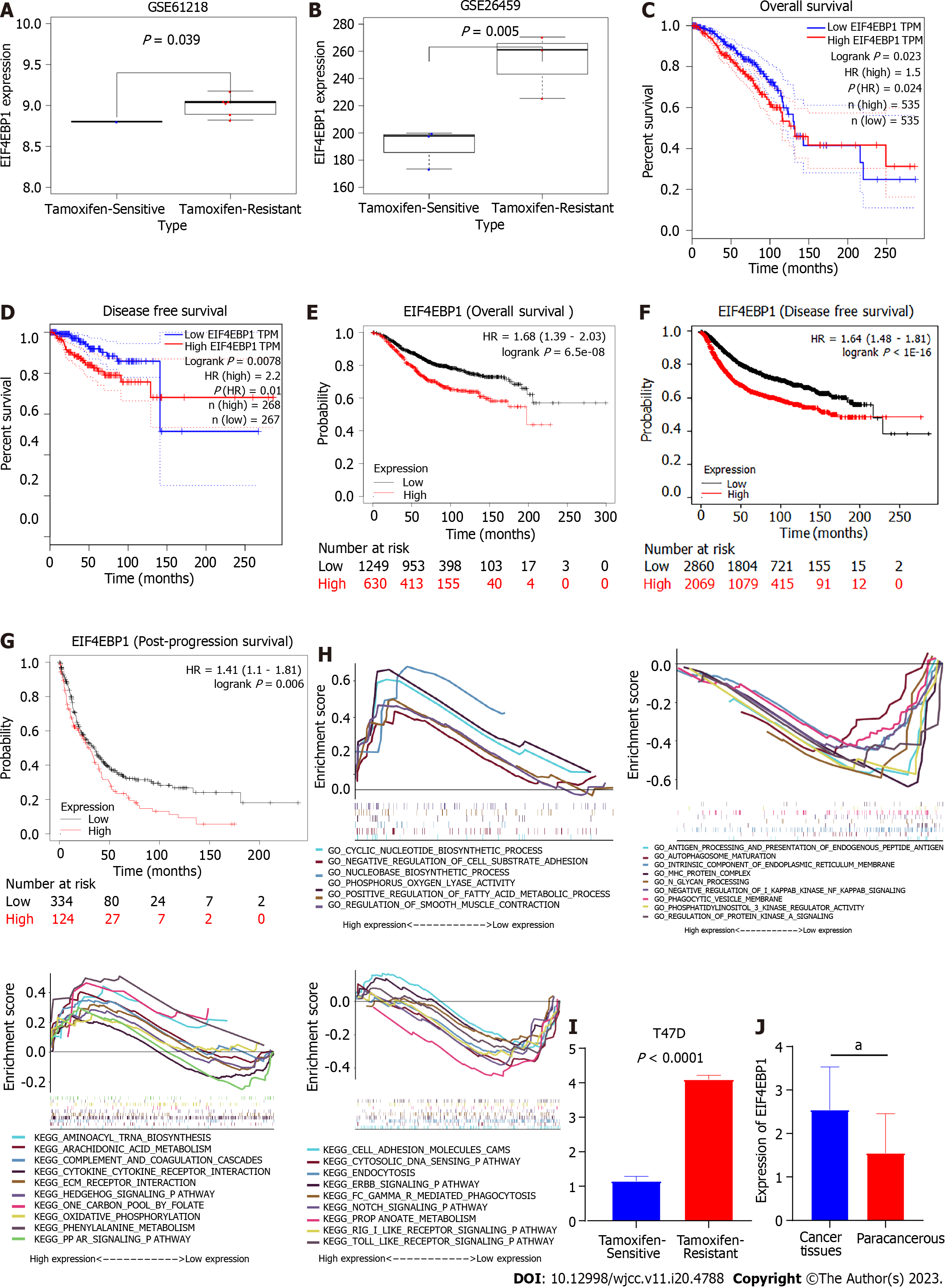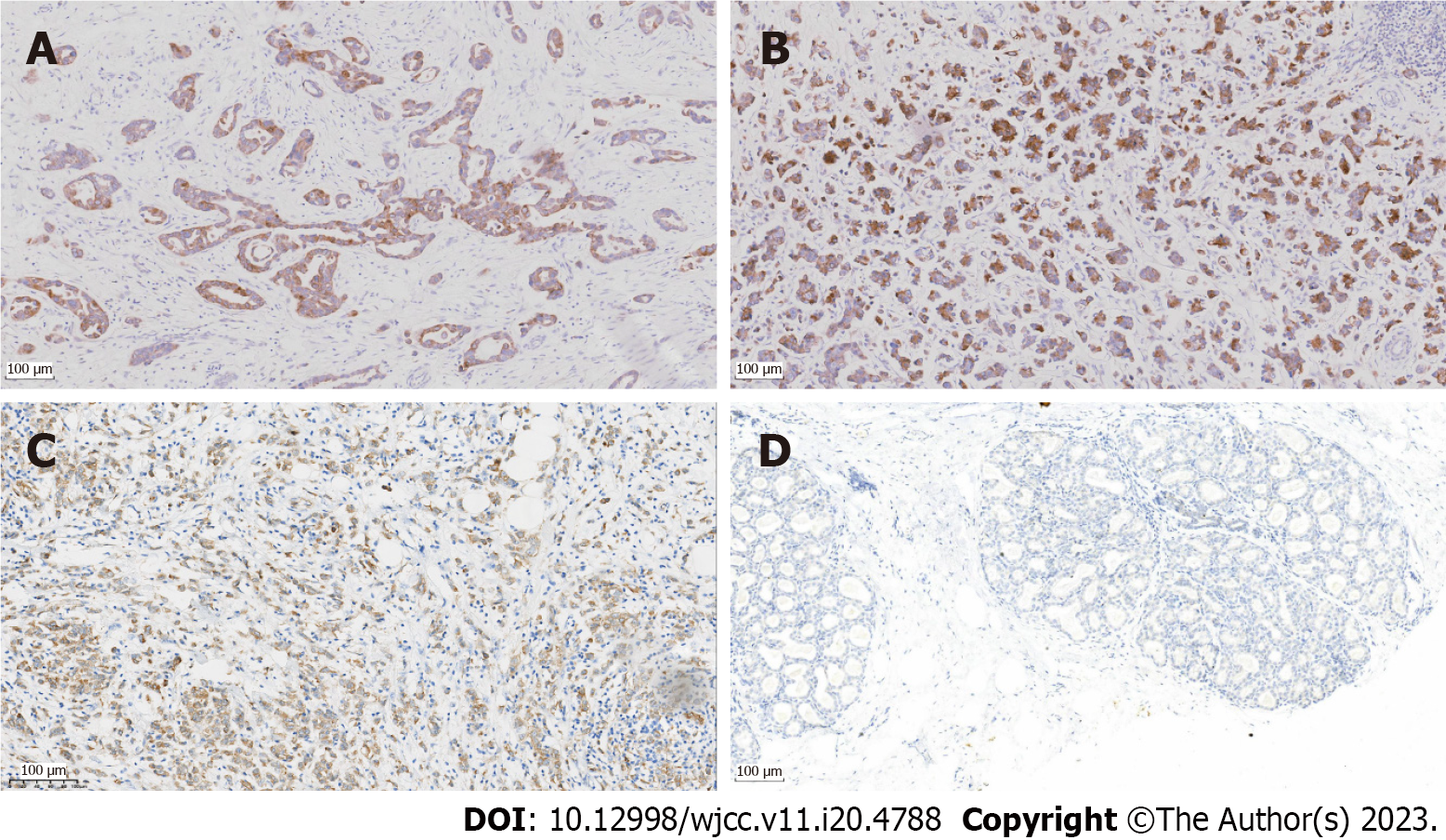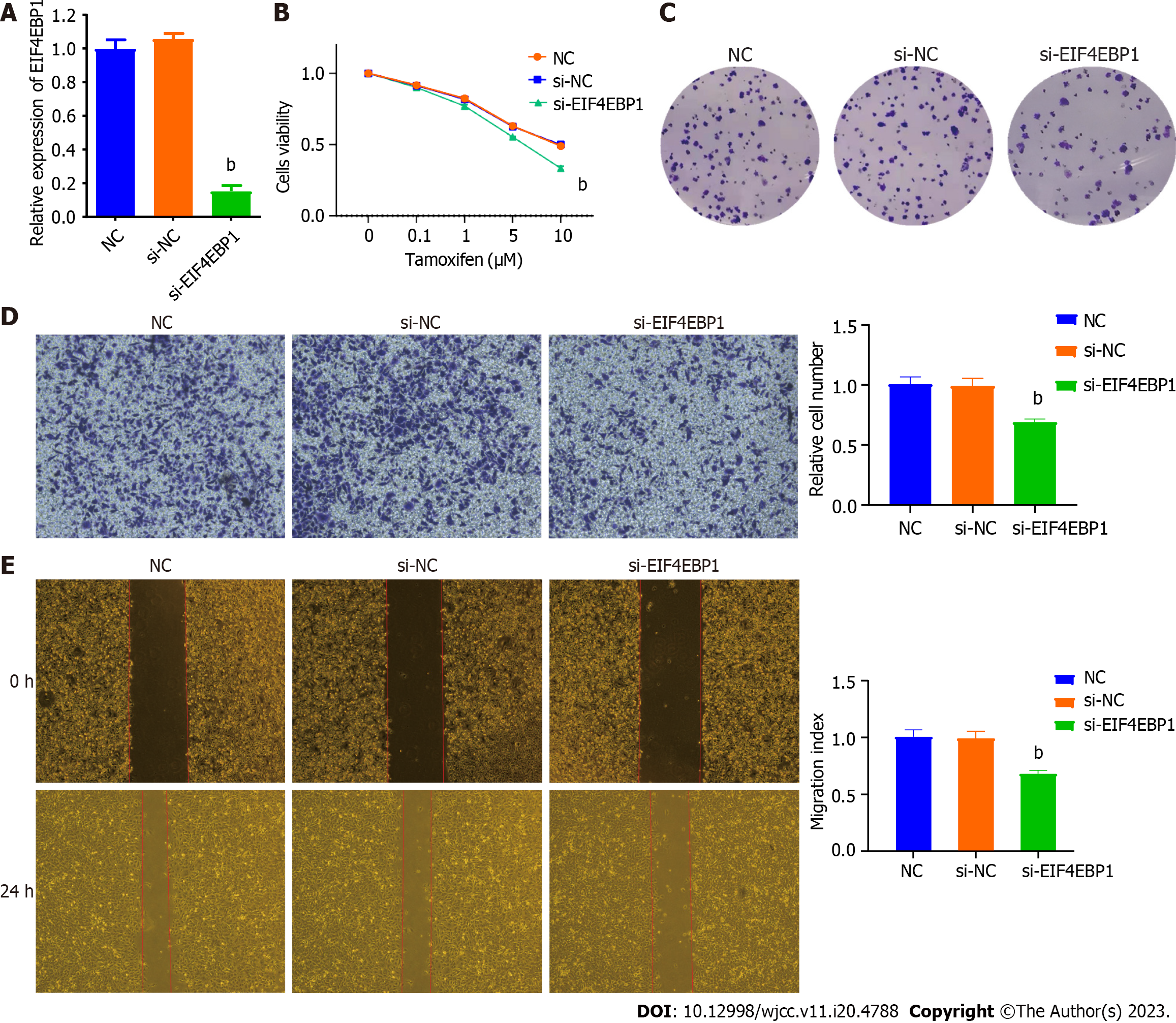Copyright
©The Author(s) 2023.
World J Clin Cases. Jul 16, 2023; 11(20): 4788-4799
Published online Jul 16, 2023. doi: 10.12998/wjcc.v11.i20.4788
Published online Jul 16, 2023. doi: 10.12998/wjcc.v11.i20.4788
Figure 1 Eukaryotic translation initiation factor 4E binding protein 1 was upregulated, which correlated with poor survival in tamoxifen-resistant breast cancer cells.
A and B: Box diagram showed that eukaryotic translation initiation factor 4E binding protein 1 (EIF4EBP1) was upregulated in tamoxifen-resistant breast cancer cells in GSE21618 and GSE26459; C: Overall survival of EIF4EBP1 analysis by Gene Expression Profiling Interactive Analysis; D: Disease-free survival of EIF4EBP1 by Gene Expression Profiling Interactive Analysis; E: Overall survival of EIF4EBP1 by Kaplan-Meier plotter; F: Disease-free survival of EIF4EBP1 by Kaplan-Meier plotter; G: Post-progression survival of EIF4EBP1 by Kaplan-Meier plotter; H: Gene Ontology and Kyoto Encyclopedia of Genes and Genomes analysis of EIF4EBP1 by GSEA; I: EIF4EBP1 was upregulated in tamoxifen-resistant breast cancer cells and confirmed by real-time reverse transcription polymerase chain reaction; J: EIF4EBP1 was upregulated in breast cancer tissues and confirmed by real-time reverse transcription polymerase chain reaction. Error bars represent means ± standard deviations of triplicate analyses. aP < 0.05. EIF4EBP1: Eukaryotic translation initiation factor 4E binding protein 1; HR: Hazard ratio.
Figure 2 Immunohistochemical staining for eukaryotic translation initiation factor 4E binding protein 1 in breast cancer tissues.
A: Invasive ductal carcinoma; B: Invasive micropapillary carcinoma; C: Invasive lobular carcinoma; D: Normal breast cancer tissues.
Figure 3 Knockdown of eukaryotic translation initiation factor 4E binding protein 1 in T47DR cells reduced the resistance to tamoxifen.
A: In T47D-R cells that downregulated the expression of eukaryotic translation initiation factor 4E binding protein 1 (EIF4EBP1), the expression of EIF4EBP1 was detected by real-time reverse transcription PCR; B:Cell Counting Kit-8 assay of EIF4EBP1 knockdown in T47DR cells treated with tamoxifen; C: Colony formation experiments of EIF4EBP1 knockdown in T47DR cells treated with tamoxifen; D: Wound healing assay showed that downregulated expression of EIF4EBP1 can more effectively decrease migration in the T47D-R cell line; E: The Transwell assay showed that downregulated expression of EIF4EBP1 can inhibit the cell invasion in the T47D-R cell line. Data are expressed as the mean ± standard deviation from three independent experiments. bP < 0.01. EIF4EBP1: Eukaryotic translation initiation factor 4E binding protein 1; NC: Negative control; si: Silencing RNA.
Figure 4 Overexpression of eukaryotic translation initiation factor 4E binding protein 1 in T47DR cells increased the resistance to tamoxifen.
A: In T47D-R cells that upregulated the expression of eukaryotic translation initiation factor 4E binding protein 1 (EIF4EBP1), the expression of EIF4EBP1 was detected by real-time reverse transcription polymerase chain reaction; B: Cell Counting Kit-8 assay of EIF4EBP1 overexpression in T47D-R cells treated with tamoxifen; C: Colony formation experiments of EIF4EBP1 overexpression in T47D-R cells treated with tamoxifen; D: The wound healing assay showed that upregulated expression of EIF4EBP1 can more effectively increase migration in the T47D-R cell line; E: The Transwell assay showed that upregulated expression of EIF4EBP1 can increase cell invasion in the T47D-R cell line. Data are expressed as the mean ± SD from three independent experiments. bP < 0.01. EIF4EBP1: Eukaryotic translation initiation factor 4E binding protein 1; NC: Negative control; ov: Overexpression.
- Citation: Yang S, Hui TL, Wang HQ, Zhang X, Mi YZ, Cheng M, Gao W, Geng CZ, Li SN. High expression of autophagy-related gene EIF4EBP1 could promote tamoxifen resistance and predict poor prognosis in breast cancer. World J Clin Cases 2023; 11(20): 4788-4799
- URL: https://www.wjgnet.com/2307-8960/full/v11/i20/4788.htm
- DOI: https://dx.doi.org/10.12998/wjcc.v11.i20.4788












